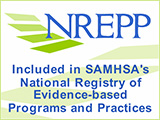 |
Adrienne E. Adams, PhD
Assistant Professor, Psychology
139B Psychology Bldg., 316 Physics Rd.
Michigan State University
E. Lansing, MI 48824-1116
adamsadr@msu.edu
http://vaw.msu.edu/faculty/adams/
Dr. Adams was trained in the CAP model by Cris Sullivan in 2002, and has trained and supervised numerous advocates since then. She has also trained CAP supervisors in the model and worked closely with Turning Point, Inc., in Mount Clemens as they adopted the model in 2009. |
|
|
 |
Nicole Allen, PhD
Associate Professor, Psychology
University of Illinois
721 Psychology Bldg.
603 E. Daniel Street, M/C 716
Champaign, IL 61820
217-333-6739
allenne@illinois.edu
Dr. Allen was trained in the CAP model by Cris Sullivan in the mid-90s and took the program to the University of Illinois, where it has been in existence for over 10 years. Dr. Allen has trained numerous CAP advocates as well as supervisors over the years. |
|
|
 |
Cris M. Sullivan, PhD
Director, MSU Research Consortium on Gender-based Violence
130 Psychology Bldg., 316 Physics Rd.
Michigan State University
E. Lansing, MI 48824-1116
1-517-353-8867
sulliv22@msu.edu
http://vaw.msu.edu/faculty/sullivan/
Dr. Sullivan first developed CAP in 1986, in collaboration with a number of domestic violence survivors and advocates. She has trained and supervised hundreds of advocates over the years, and is now collaborating on the Health Advocacy Project as well as the dissemination of CAP in Monterrey, Mexico. |
 |
Angela L. Walden, MA
Institute for Juvenile Research
1747 W. Roosevelt Rd.
Chicago, IL 60608
1-805-748-3586
walden1@illinois.edu
In addition to supervising the implementation of the Community Advocacy model with women who have experienced intimate partner violence, Angela served as the instructor and supervisor of a Community Advocacy model intervention adapted for use with juvenile-justice involved adolescent girls. In total, she has supervised over 50 advocates and approximately 75 clients. Angela has co-facilitated training on the Community Advocacy model with community service providers and conducted several invited workshops in community settings based on aspects of the Community Advocacy intervention model. |









